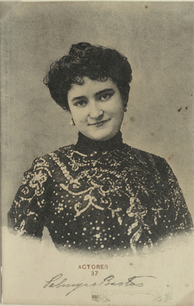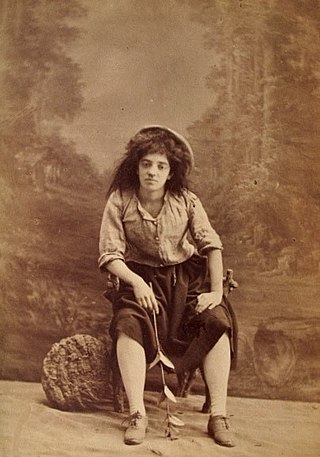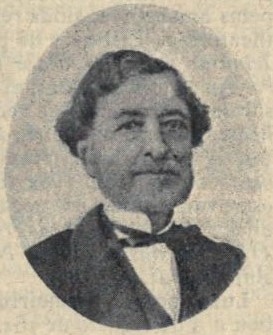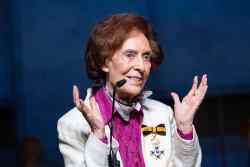
Palmira Bastos (1875–1967) was one of the best-known Portuguese stage actresses in the first half of the 20th century.

The Teatro São Luiz is a theatre located in the Chiado district of the Portuguese capital of Lisbon. It opened on 22 May 1894.

Delfina Perpétua do Espírito Santo, known on the stage simply as Delphina, was a Portuguese actress who specialised in comedy roles.

The Teatro da Rua dos Condes, or simply Condes, was a theatre in the Portuguese capital of Lisbon. It was opened in 1738 and rebuilt in 1755 after an earthquake. Never considered comfortable, it was demolished and rebuilt in 1888 and eventually converted to a cinema. After a further demolition and reconstruction as a purpose-built cinema, the building now houses a Hard Rock Café. For part of its life the Teatro da Rua dos Condes was one of Lisbon's major theatres, attracting the city's elite, including the royal family. However, with the construction of newer, more modern theatres it gradually moved from offering operas and legitimate theater to vaudeville and revues with more of a mass appeal.

Emília das Neves was a Portuguese actress. She is considered to have been the most notable Portuguese actress of her time and be the first great female star to emerge in Portugal.

The Teatro do Ginásio was a theatre in Lisbon, Portugal that mainly concentrated on performances of comedy shows.

Alice Schmidt Constant Lafourcade Rey Colaço was a Portuguese painter, modernist illustrator, lyric singer, set designer and costume designer.

Emília Adelaide was a Portuguese actress and theatre company manager in the 19th century.

Emília de Oliveira (1874–1968) was a Portuguese theatre and film actress.

Beatriz Rente was a Portuguese theatre actor.

Ana Cardoso was a 19th-century Portuguese actress.

Esther de Carvalho was a controversial Portuguese actress and opera singer who also became well-known in Brazil, where she died a young death.

Rosa Damasceno was a 19th-century Portuguese actress.

António de Sousa Bastos was a Portuguese writer, playwright, theatre entrepreneur and journalist. Author of the Diccionario do theatro portuguez, he was the husband of the actress Palmira Bastos.

Émile Doux (1798–1876), known in Portugal and Brazil as Emílio Doux, was a French theatre actor, director, playwright and impresario in Portugal and later in Brazil.

Amélia Augusta da Assunção Barros, better known as Amélia Barros was a Portuguese actress and lyrical singer, known for excelling in operettas in both Portugal and Brazil.

Ana Elisa Pereira was a Portuguese stage and film actress and singer, mainly known for her work in theatres in Lisbon.

Josefa de Oliveira, was a Portuguese theatre actress and lyrical singer.

Carmen Dolores Cohen Sarmento Veres (1924–2021) was a Portuguese stage, radio and television, and film actress and writer, with a career that lasted 60 years.




















